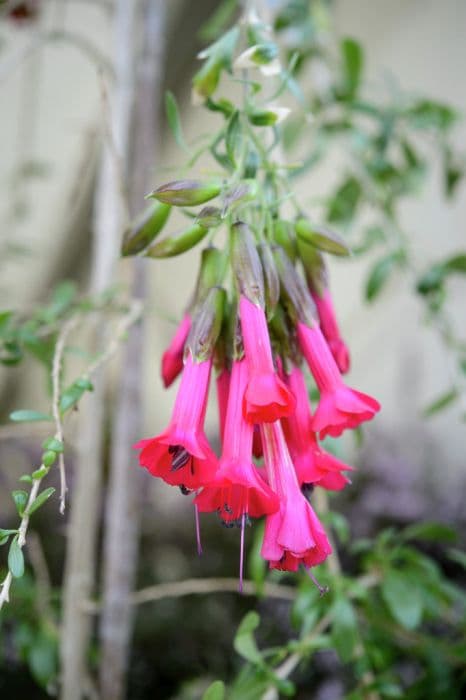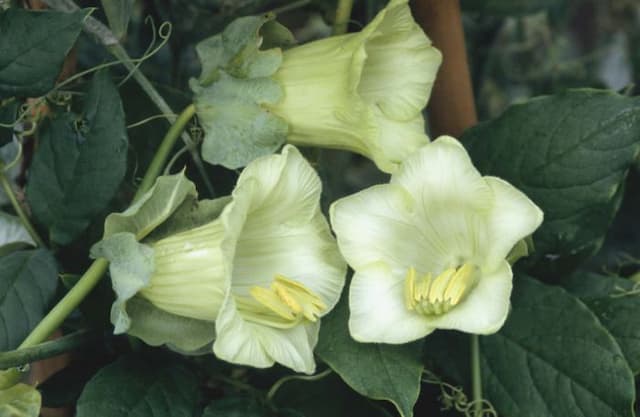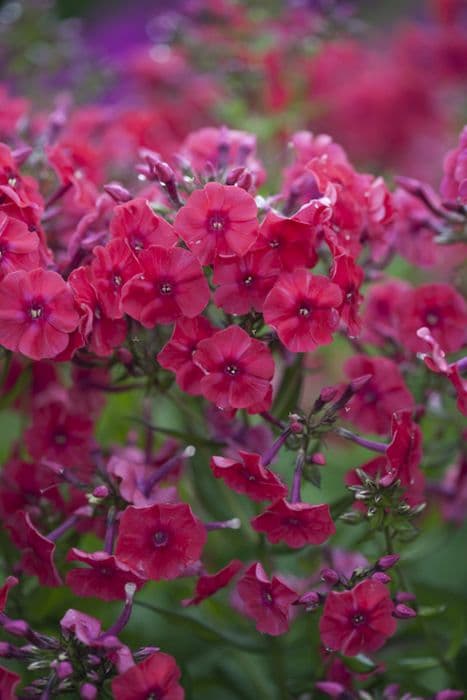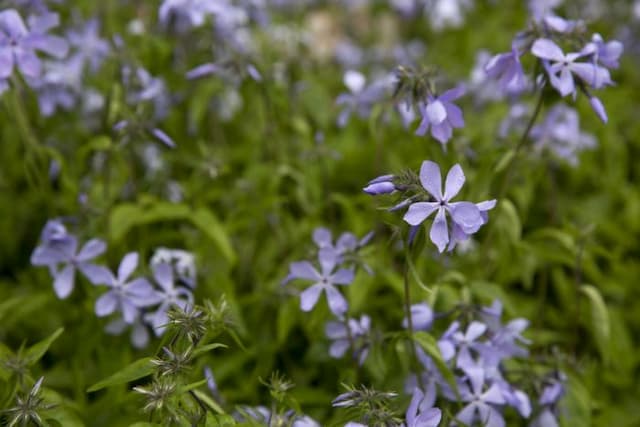Phlox 'Utopia' Phlox × arendsii 'Utopia'

ABOUT
a herbaceous perennial, up to 1.5m high, with green, lance-shaped leaves and very large heads of highly-scented, pale lilac-pink flowers in mid and late summer
About this plant
 Names
NamesFamily
Polemoniaceae.
Synonyms
Garden Phlox, Summer Phlox, Perennial Phlox.
Common names
Phlox × arendsii 'Utopia'.
 Characteristics
CharacteristicsLife cycle
Perennials
Foliage type
Deciduous
Color of leaves
Green
Flower color
Varies
Height
1-2 feet (30-60 cm)
Spread
1-2 feet (30-60 cm)
Plant type
Herb
Hardiness zones
4
Native area
Hybrid origin
Benefits
 General Benefits
General Benefits- Attracts Pollinators: Phlox are known to attract bees, butterflies, and other beneficial insects to the garden.
- Colorful Display: 'Utopia' offers a vibrant display of flowers, which can enhance the aesthetic appeal of any garden space.
- Fragrance: The flowers of Phlox 'Utopia' are fragrant, adding a pleasant scent to the area where they are planted.
- Long Blooming Period: This hybrid Phlox has an extended flowering period, providing color for a longer duration than some other garden perennials.
- Drought Tolerance: Once established, Phlox 'Utopia' can tolerate periods of drought, making it suitable for gardens with less frequent watering.
- Low Maintenance: It requires minimal care besides occasional watering and deadheading to promote further blooming.
- Versatility: The plant can be used in a variety of garden settings including borders, rock gardens, and as a ground cover.
- Hardiness: Phlox 'Utopia' is generally hardy and can survive in a range of climates, withstanding different weather conditions.
 Medical Properties
Medical PropertiesThis plant is not used for medical purposes.
 Air-purifying Qualities
Air-purifying QualitiesThis plant is not specifically known for air purifying qualities.
 Other Uses
Other Uses- Phlox 'Utopia' can be used as a natural dye source for fabrics, offering hues ranging from soft pink to deep purples depending on the concentration and fabric treatment.
- The petals of Phlox 'Utopia' can be pressed and included in homemade paper, adding texture and color to the final product.
- Crushed flowers from Phlox 'Utopia' can be used in potpourri for their vibrant color and mild fragrance, enhancing visual and olfactory appeal.
- Phlox 'Utopia' can serve as a muse for artists, who may use the shape and colors of the flowers as inspiration in paintings, illustrations, and textile designs.
- Decorative floral arrangements for events can include Phlox 'Utopia' for its full clusters of flowers, contributing volume and a sense of abundance.
- Edible landscape designs can incorporate Phlox 'Utopia', as long as it's confirmed that the particular variety used is non-toxic and safe for consumption.
- The enchanting scent of Phlox 'Utopia' can be captured in candles or natural perfumes, although it's a less common fragrance choice.
- Garden pathways can be lined with Phlox 'Utopia' to create a colorful, low-growing border that guides visitors through the landscape.
- Phlox 'Utopia' can be used in educational settings, such as schools or botanical gardens, to teach about plant hybridization and breeding practices.
- Butterfly and hummingbird gardens greatly benefit from the inclusion of Phlox 'Utopia', as its flowers are attractive to these pollinators and can support biodiversity efforts.
Interesting Facts
 Feng Shui
Feng ShuiPhlox is not used in Feng Shui practice.
 Zodiac Sign Compitability
Zodiac Sign CompitabilityPhlox is not used in astrology practice.
 Plant Symbolism
Plant Symbolism- Harmony: Phlox symbolizes harmony and unity, and the name 'Utopia' further emphasizes an ideal state of perfection in relationships and communities.
- Proposal: In the language of flowers, phlox can indicate a proposal or offer of marriage, reflecting the desire for long-lasting unity.
- Agreement: Phlox is also associated with the idea of agreement, representing mutual understanding and shared perspectives within a group.
- Sweet Dreams: Because of its gentle appearance and fragrance, phlox is often linked to the concept of sweet dreams and comfort.
 Water
WaterGarden Phlox requires regular watering to maintain evenly moist soil, particularly during hot, dry periods. It's best to water deeply once a week, providing about one inch of water which translates to roughly 0.623 gallons per square foot. Avoid overhead watering to prevent mildew, instead water at the base of the plant early in the day. During rainy seasons or cooler weather, reduce the frequency as Garden Phlox prefers well-drained soil and can be susceptible to root rot with excessive moisture.
 Light
LightGarden Phlox thrives in full sun conditions, meaning at least six hours of direct sunlight per day. However, it can also tolerate partial shade, especially in hot summer climates where some respite from the afternoon sun can help prevent stress. The ideal spot for Garden Phlox is an area that receives morning sunlight and is protected from harsh afternoon rays.
 Temperature
TemperatureGarden Phlox is hardy and can tolerate a range of temperatures, but it grows best when the temperature is between 60°F and 70°F. These plants can survive minimum winter temperatures down to about -30°F and can handle summer highs up to around 90°F. To flourish, they need to go through a period of chilling winter temperatures, which makes them unsuitable for tropical climates that don't experience a cold season.
 Pruning
PruningPrune Garden Phlox in late winter or early spring before new growth begins to remove any dead or damaged stems and to shape the plant. Deadheading, or removing spent flowers, encourages reblooming and can be done throughout the flowering season. Cut back the entire plant by one-third to one-half after flowering to promote denser growth and rejuvenate the plant for the next season. The best time to prune for shaping is in early spring, just as the plant emerges from dormancy.
 Cleaning
CleaningAs needed
 Soil
SoilGarden Phlox prefers rich, moist, well-draining soil with a pH of 6.0 to 8.0. To achieve the best soil mix, combine two parts garden soil, one part peat moss or compost, and one part perlite or sand to ensure proper drainage.
 Repotting
RepottingGarden Phlox, being a perennial garden plant, doesn't typically require repotting as it is usually grown outdoors. In a garden setting, it may be divided every 3 to 4 years to maintain vigor.
 Humidity & Misting
Humidity & MistingGarden Phlox thrives in average outdoor humidity conditions. It does not have specific humidity requirements but benefits from normal garden environments where the humidity level is naturally regulated.
 Suitable locations
Suitable locationsIndoor
Plant in a bright spot, keep soil moist, fertilize monthly.
Outdoor
Choose full sun, enrich soil, water regularly, watch for pests.
Hardiness zone
4-8 USDA
 Life cycle
Life cyclePhlox × arendsii 'Utopia', commonly known as the hybrid phlox, begins its life cycle as a seed, which after sowing will germinate in the presence of sufficient warmth and moisture. The seedlings emerge and establish a rosette of leaves during the first growth stage, developing a root system to absorb nutrients and water. As the plant matures, it enters a vegetative state characterized by the growth of stems and foliage during the spring. Following the vegetative state, the hybrid phlox enters the reproductive phase, producing clusters of scented flowers in a range of colors from mid-summer to early autumn, attracting pollinators for sexual reproduction. After pollination, the flowers develop into small capsules containing seeds, completing the generative stage. The plant may then enter a period of dormancy, especially in colder climates, where it conserves energy before the next growing season or it could be evergreen, depending on the climatic conditions of its environment.
 Propogation
PropogationPropogation time
Spring to Summer
Phlox × arendsii 'Utopia', or commonly known as hybrid phlox, is most popularly propagated through stem cuttings. This method is best performed in late spring or early summer when the plant is actively growing. To propagate, a healthy, non-flowering stem of about 4 to 6 inches long (10 to 15 cm) is cut just below a node. The lower leaves are removed, and the cut end can be dipped in rooting hormone to promote root growth. The cutting is then placed in a pot with moist, well-draining soil, ensuring at least one node is below the soil surface. The pot should be kept in indirect sunlight and the soil consistently moist to encourage rooting. Roots typically develop within a few weeks, after which the new phlox plant can be transplanted into the garden.









